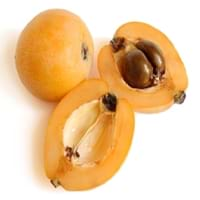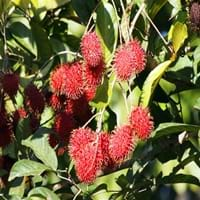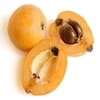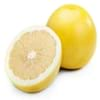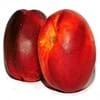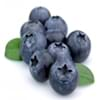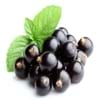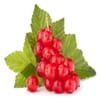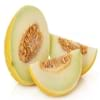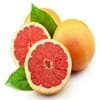Health Benefits
Cancer prevention, Heart care, Reduces nervous tension, Reduces blood circulation problems, Reduces stress, Regulation of heart rate, Strengthening of bones
Anti-oxidant properties, Boosts immune system, Skin rejuvenation, Strengthening of bones
General Benefits
Anti-inflammatory properties, Controls blood pressure, Digestive aid, Eye care, Helps in weight loss, Improves eye vision, Maintains healthy cholesterol level, Strengthens bones
Antiseptic properties, Cures headache, Removes waste from kidney
Skin Benefits
Anti-aging benefits, Reduces wrinkles, Treatment of dark spots, Treatment of skin diseases
Hydrates skin
Hair Benefits
Protects hair
Good conditioner
Allergy Symptoms
Diarrhea, Itching of mouth, Nasal congestion, Sneezing, Swelling of face, Watery eyes
Chest pains, Rhinitis, Wheezing
Side Effects
Allergic reaction
Unknown
Best Time to Eat
Along with meal, As a snack in the late afternoon, Don't consume at night and before bed, Morning time (before lunch)
As a snack in the late afternoon, Don't consume at night and before bed, Eat the fresh ones, avoid mixing with any other foods, don't eat after meal., Morning time (before lunch)
Vitamin B5 (Pantothenic Acid)
Not Available
Vitamin C (Ascorbic Acid)
Not Available
Vitamin E (Tocopherole)
Not Available
Vitamin K (Phyllochinone)
Not Available
Lutein+Zeaxanthin
Not Available
Calories in Fresh Fruit with Peel
Calories in Fresh Fruit without Peel
Not Available
Not Available
Calories in Frozen Form
Not Available
Calories in Dried Form
Not Available
Calories in Juice
Not Available
Type
Tree fruit, Tropical
Tree fruit, Tropical
Season
Winter
Early summer, Early winter, Late fall, Late spring
Varieties
Ahdar, Ahmar, Asfar, Blush, Champagne, Early Red, Eulalia, Fire Ball, Golden Red, Golden Yellow, Oliver, Thales, Thames Pride, Victor and Wolfe
Rongrien, Chompu, Rapiah, Bingjai and Lebak Bulus
Color
Orange, Yellow
Coral red, Yellow
Inside Color
Orange
Greyish-white
Taste
Sweet, Tart
Sour, Sweet
Soil Type
Clay, Loam, Sand, Well-drained
Clay, Loam
Climatic Conditions
Warm to hot climate
Humid
Facts about
- Loquats are used in plum wine manufacturing.
- Dried leaves of loquat are used to make herbal tea.
- The seeds of loquat are slightly toxic & the symptoms of intoxication are nausea, vomiting & shortness of breath.
- Oils extracted from its seeds is used to make soaps and candles.
- 'Rambut' means hairy in Malay.
- It makes the best hair mask.
- Seeds are edible and healthy too.
Top Producer
Japan
Thailand
Other Countries
Brazil, Chile, China, Egypt, Israel, Italy, Morocco, Pakistan, Portugal, Spain, Turkey
Africa, India, Indonesia, Malaysia, Philippines, Sri Lanka
Top Importer
China
Singapore
Top Exporter
Spain
Thailand
Botanical Name
Eriobotrya japonica
Nephelium lappaceum
Synonym
Crataegus bibas or Mespilus japonica or Photinia japonica
Rambota
Subkingdom
Tracheobionta
Tracheobionta
Division
Magnoliophyta
Tracheophyta
Class
Magnoliopsida
Magnoliopsida
Family
Rosaceae
Sapindaceae
Genus
Eriobotrya
Nephelium
Species
E. japonica
N. lappaceum
Generic Group
Rose
Not Available
Difference Between Loquat and Rambutan
We might think that Loquat and Rambutan are similar with respect to nutritional value and health benefits. But the nutrient content of both fruits is different. Loquat and Rambutan Facts such as their taste, shape, color, and size are also distinct. The difference between Loquat and Rambutan is explained here.
The amount of calories in 100 gm of fresh Loquat and Rambutan with peel is 47.00 kcal and 69.00 kcal and the amount of calories without peel is Not Available and Not Available respectively. Thus, Loquat and Rambutan belong to Low Calorie Fruits and High Calorie Fruits category.These fruits might or might not differ with respect to their scientific classification. The order of Loquat and Rambutan is Rosales and Sapindales respectively. Loquat belongs to Rosaceae family and Rambutan belongs to Sapindaceae family. Loquat belongs to Eriobotrya genus of E. japonica species and Rambutan belongs to Nephelium genus of N. lappaceum species. Beings plants, both fruits belong to Plantae Kingdom.
